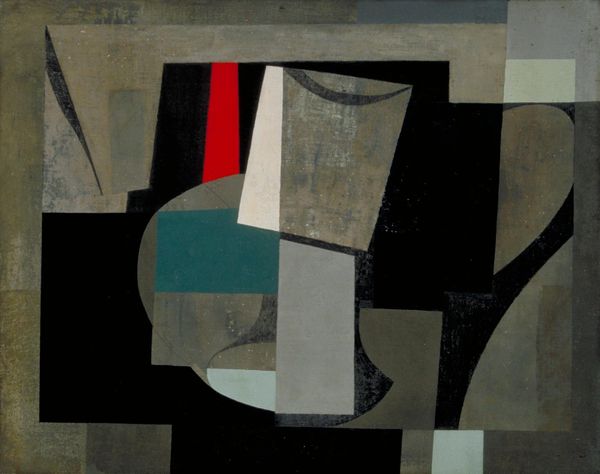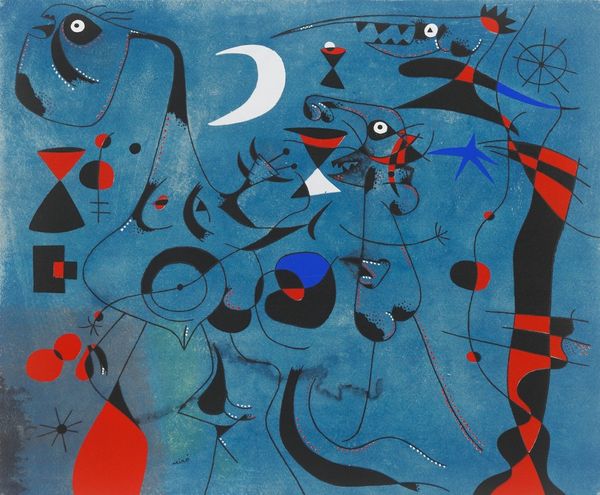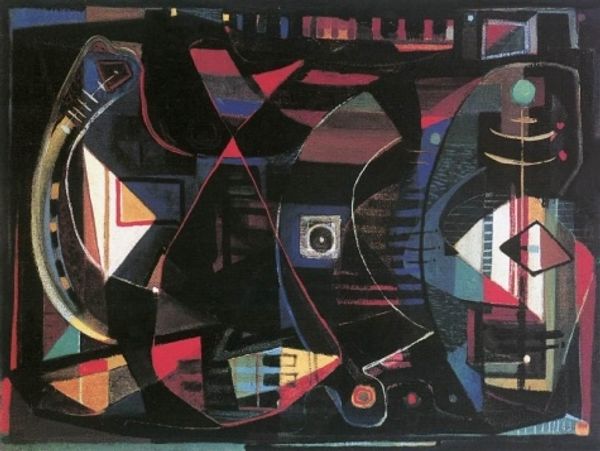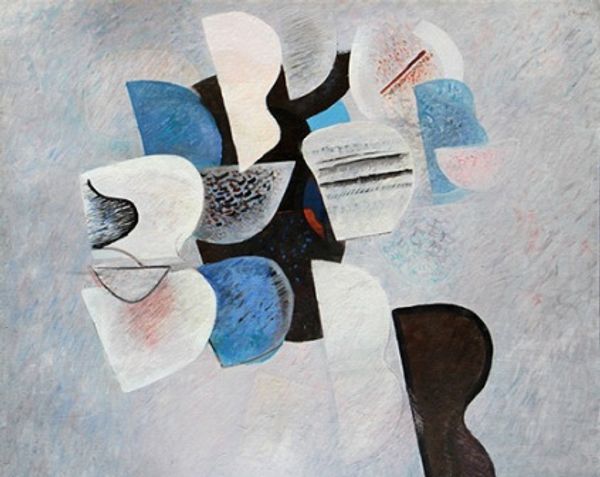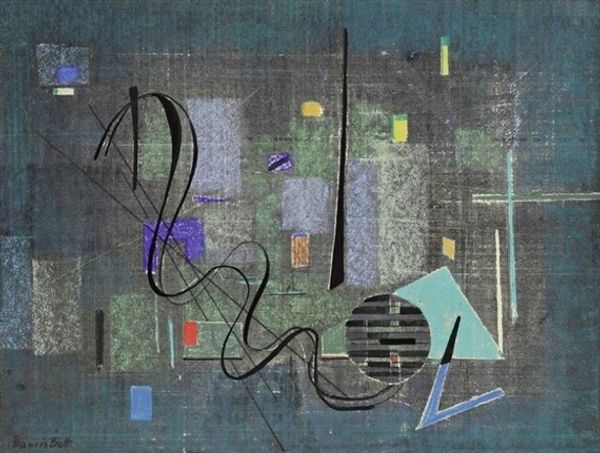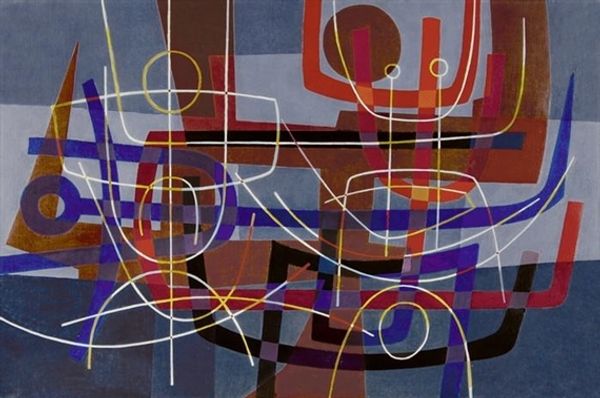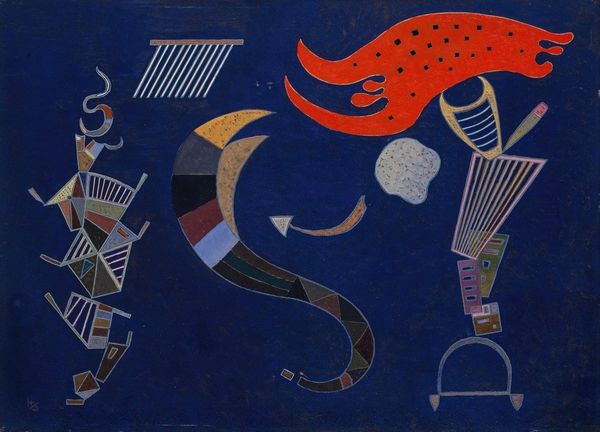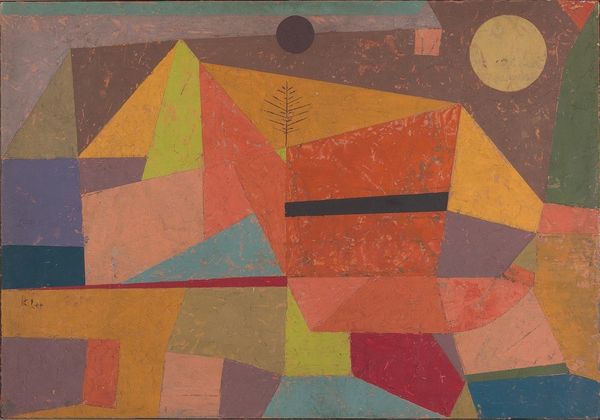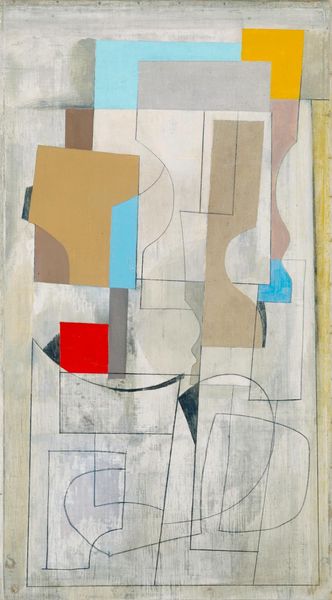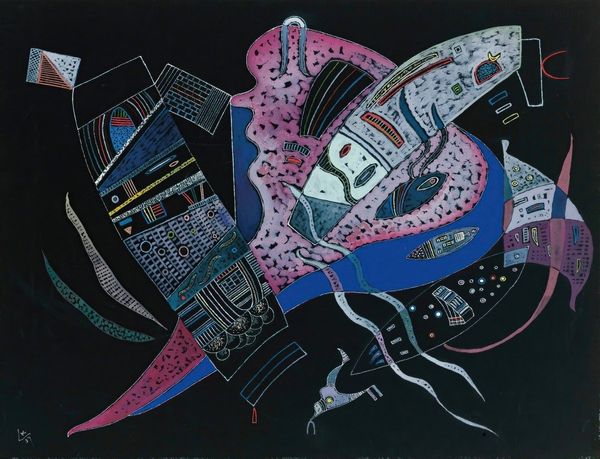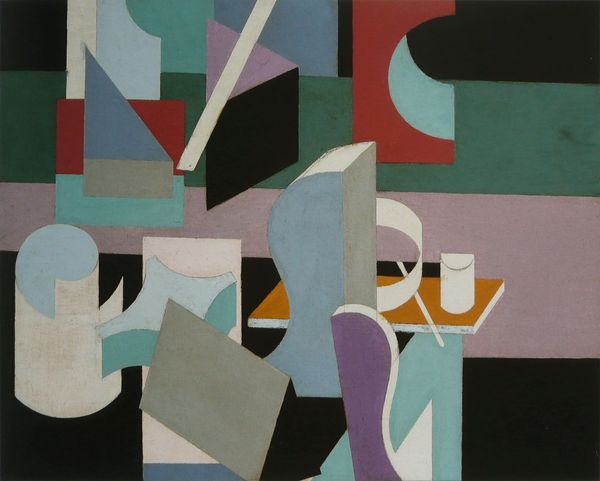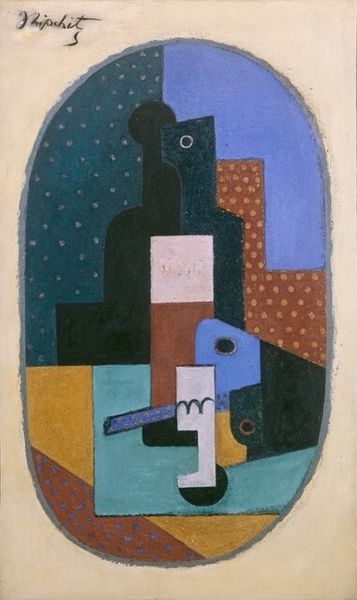
Copyright: Public Domain: Artvee
Editor: This is "La Forme Blanche" by Wassily Kandinsky, painted in 1939. It’s a painting that, at first glance, feels quite stark because of its dark background. What strikes me most is the interplay of geometric shapes and the textured white form that seems to float in the composition. What do you see in this piece? Curator: The power of this canvas resides precisely in that interplay, wouldn't you agree? Kandinsky orchestrates a delicate tension between the grounded darkness and the ethereal white form. Observe how the geometric figures—triangles, rectangles, circles—aren't merely scattered; they're meticulously positioned to create a dynamic visual rhythm. The "white form" itself, broken into smaller units, interacts with its darker sibling like notes in a musical composition. Does it suggest to you an argument? Editor: An argument... Interesting! I was focused on the shapes. So you're suggesting the contrast is key? How does the materiality – the paint itself – contribute to this? Curator: Precisely. Consider the texture within the shapes. Notice the varied application of pigment and surface patterns which introduces another layer of complexity, setting them apart. The color selection is intentional; how does the contrasting value amplify its structural dimensions? Editor: I see. The bright, clear colors really pop against the background, giving each shape a distinct presence and role in the composition. This makes them even more critical, each placed in the most optimal position for visual intrigue. Curator: Precisely. Kandinsky invites us to move past conventional representational modes of art to experience a unique formal configuration. I believe this careful formal exploration elevates Kandinsky’s work, regardless of the piece’s symbolism. It is his technique in orchestrating a dialogue between color, line, and form, the materiality of the pigment itself, that constitutes its meaning. Editor: So it's all about how those elements interact within the frame? Focusing on form alone, regardless of external meaning. Thank you. Curator: Exactly! Examining these components permits a richer reading and response to an art experience.
Comments
No comments
Be the first to comment and join the conversation on the ultimate creative platform.
